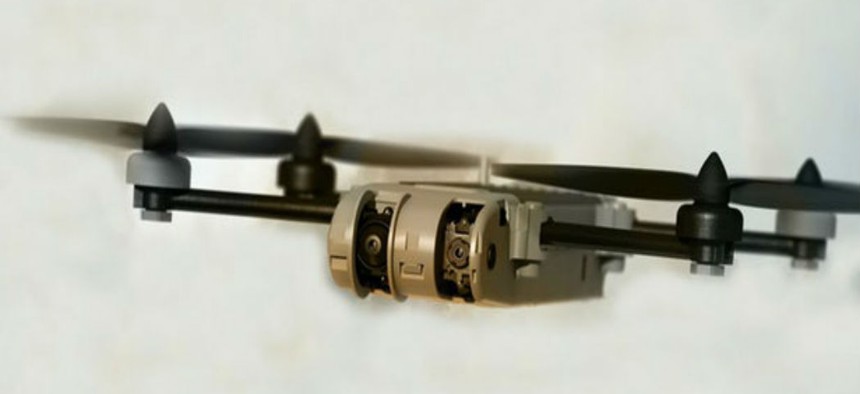The technology is here for tiny, swarming, gust-tolerant, perching drones
The Army Research Laboratory’s micro-drone research program ended last month, but is leaving a legacy of brand new micro-drone technology
A decade of scientific research on micro-unmanned aerial vehicles culminated last month with 17 live demonstrations of new drone technologies and capabilities; from autonomous swarming to “perch and stare” abilities.
“I am absolutely certain this technology will help soldiers of the future, there are new platforms, new algorithms, new sensors,” said Allison Mathis, a researcher with the Army. Dr. Brett Piekarski, Collaborative Alliance Manager for the Army, added that an example of these new innovations “is in scaling things down to be able to do autonomous behavior in something that fits in the size of your hand.”
The program, known as Micro Autonomous Systems and Technology (MAST), was a collaborative project between the Army Research Laboratory (ARL), BAE Systems, and multiple academic institutions, according to the ARL press release.
Many of the innovations of the MAST program were demonstrated live from August 22nd to 24th at the Aberdeen Proving Ground in Maryland. Some of the most notable breakthroughs were in self-organized flying, gust-tolerance, and “perch and stare” capabilities.
According to the ARL, one of the original program objectives was to explore the technology that would allow autonomous micro-drones to work together. The University of Pennsylvania team advanced this goal by developing drones that self-organized into formations.
The latest autonomous swarming technology does not require pre-programing the vehicles, reports a Department of Defense press release. Rather, the drones function as multiple parts of one computing “brain.” This means that “the swarm has no leader and can gracefully adapt to drones entering or exiting the team,” explained William Roper, Director of the Strategic Capabilities Office.
In addition, the University of Maryland and Texas A&M developed a brand new micro-cyclocopter drone designed to withstand wind gusts and have a higher forward speed than current micro drones. According to the Institute of Electrical and Electronics Engineers, a cyclocopter is uniquely designed with eight rotating propellers that are arranged in circles of four each on either side of the vehicle and face outward.
The small size and weight of micro-drones make them highly susceptible to turbulent air and wind conditions, however the UMaryland and Texas A&M teams used the lightness of the cyclocopter at low Reynolds numbers, or low air density, to make it faster and able to withstand unpredictable air flow.
A third capability, developed by the Stanford University team, is known as “perch and stare.” According to the ARL press release, researchers took inspiration from the natural world to develop a micro-drone that can land, perch-on, and then take-off on ceilings, roofs, and walls.
Founded in 2008, the MAST program was originally five years, but was then extended to ten. In all, the program involved collaboration between 19 industry and academic research teams, reports the ARL.
Following the end of the MAST program, “we really need to work with our stakeholders and our partners to take it to the next level,” said Pierkarski. “To take the technology and the concepts we’ve demonstrated in the program and work these into engineered prototypes that we can actually put into the hands of the soldier and put into the field.”





